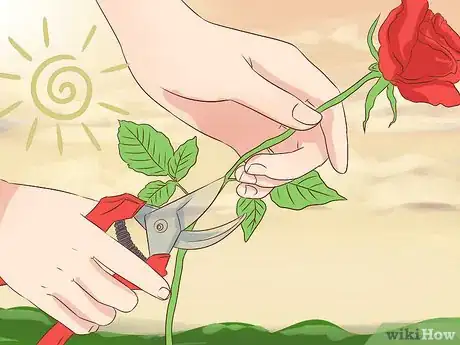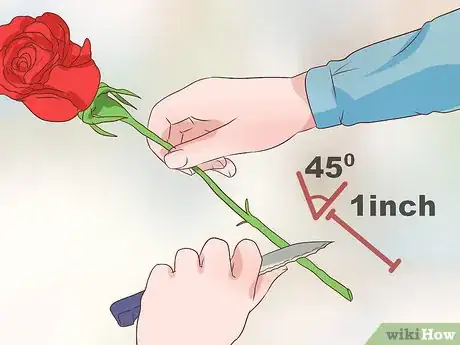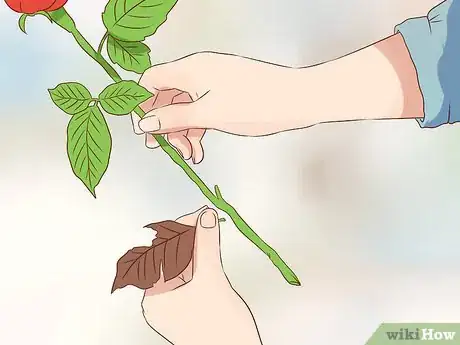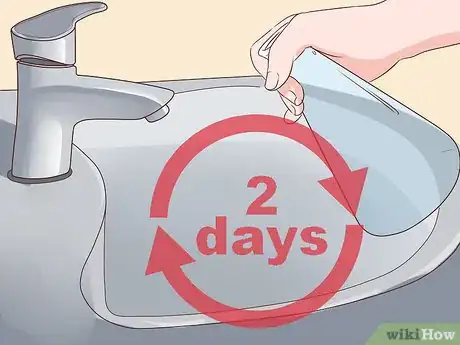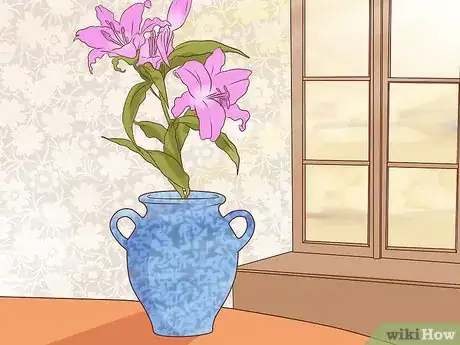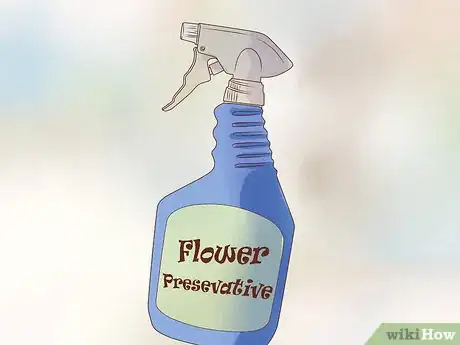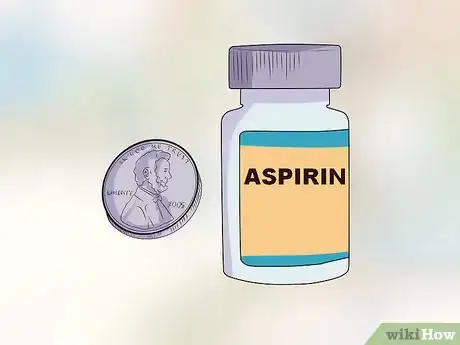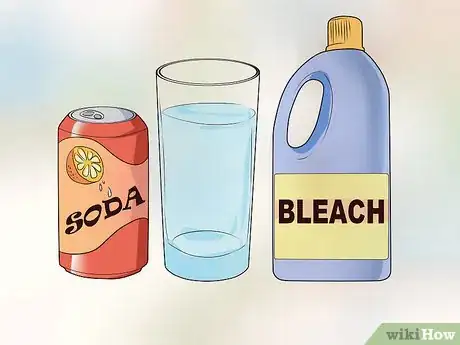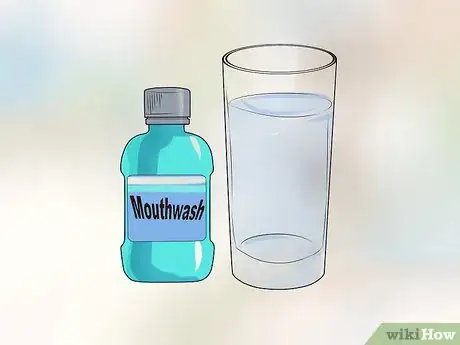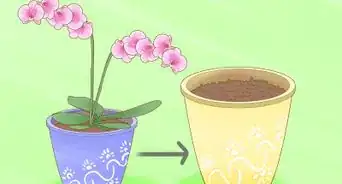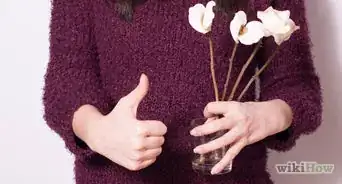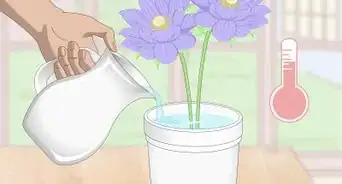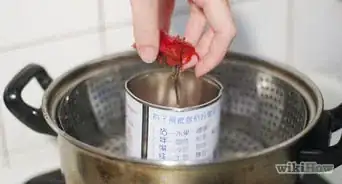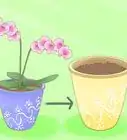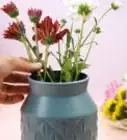This article was co-authored by Rachel Cho. Rachel Cho is a Floral Designer, Plant Specialist, and the Owner of Rachel Cho Floral Design, a floral shop based in New York City. With more than 16 years of experience, she specializes in original and impactful floral design and is known for her dexterity, innate artistry, and design sense. Rachel’s work has been featured in numerous national media outlets such as The New York Times, Harper’s Bazaar, and Huffington Post Weddings.
There are 8 references cited in this article, which can be found at the bottom of the page.
This article has been viewed 30,274 times.
Freshly cut flowers are an awesome way to brighten up any room in your house. Since cut flowers have been removed from their root system, they become increasingly susceptible to decay over time and can be somewhat hard to maintain. Luckily, there are scientifically proven ways to increase the longevity of your flowers. By implementing some simple techniques, you can ensure that your flowers thrive for a longer time.
Steps
Cutting Your Flowers
-
1Cut your flowers in the morning. Cutting your flowers earlier in the day when it's cool will ensure that the flower has stored carbohydrates, which are required to keep them alive.[1] Keep a bucket of water with you and make sure to transfer them immediately after cutting them. Flowers need a constant stream of food to flourish, and being left out of the water causes them to dry up.
- Flowers should be cut at varying maturity levels depending on the type of flower.
- Daffodils, roses, irises and gladiolas should be cut in the bud stage, while delphiniums, marigolds, dianthus flowers should be open before cutting.[2]
- Use a plastic bucket or pail. Metal can throw the flower's pH balance and reduce its lifespan.
-
2Place freshly cut flowers in your refrigerator for six hours. Refrigeration at 35°F (1.5°C) can triple the lifespan of freshly cut flowers in your house.[3] Doing this before you transfer them to a vase with water slows down water loss, respiration, and development. Your flowers will require less water and die slower if you put them in the fridge.
- Slowing down the flower's development will allow it to remain in the flowering stage for a longer period of time before wilting and dying.
- You can also pop your flowers in the refrigerator when you are going to sleep to help preserve them for a longer time.[4]
Advertisement -
3Recut the stems on your flowers every three days. Trim one inch from the bottom of the stem at a 45-degree angle using durable gardening tools like shears or clippers.[5] Water bubbles can get trapped on the end of a flower's stem which will prevent it from absorbing water.[6] Keeping your flowers recut will ensure that their water absorption levels remain steady.
Maintaining Your Flowers
-
1Remove bruised leaves and any leaves that are under the water line. Use sharp gardening scissors to cut all of the flowers that fall under the water line because it can promote decay in your flowers.[9] Remove any leaves or flower petals that look bruised.[10] If you have roses, do not remove the thorns as this has been shown to reduce the lifetime of the flowers.
- Failing to remove damaged leaves or leaves that are under the water line can promote bacterial growth in your vase.[11]
-
2Use lukewarm water to water your flowers. Most flowers thrive with lukewarm water because the warm water molecules move faster than cold water molecules and make it easier for the stem to absorb water. As a rule of thumb, keep your water at 100°F to 110°F (37.7°C to 43.3°C).[12]
- While this applies to most flowers, there are exceptions to this rule. Bulb flowers like hyacinths and tulips need cold water to survive.[13]
-
3Change the water every two days and clean the vase. Bacterial growth and microorganisms thrive inside of a vase. Replace the water in your vase every two to three days to prevent this from happening.[14] Scrub down the sides with a soft dish soap and remember to rinse it thoroughly before placing your flowers back into the vase. Other than promoting decay in your plant, certain bacteria are capable of entering a flower's stem and stopping water absorption as well.
- If you are using a chemical floral preservative, make sure to replace the nutrients as well as the water.
- Use a bottle brush for a vase with a thin neck.
- If you are having trouble getting to the crevices of your vessel, mix up a solution containing one part household bleach with ten parts water and allow the vase to soak overnight. [15]
- Air dry your vase before refilling it with water.
-
4Keep flowers away from air drafts and direct sunlight. Hot and cold drafts can promote water loss in your plant and exposure to direct sunlight can cause it to use up all of its stored food. Set them in a cool place in your house that isn't near things like a radiator, television sets, or hot ovens.
-
5Purchase commercial grade floral preservatives. Commercial grade floral preservatives are available at most home and gardening, hardware, and florist shops. They contain a biocide which prevents bacterial growth, an acidifier which promotes water absorption, and sugar that acts as the plant's food.[16] Replace the flower preservatives when you change the water in your vase.
- Use recommended measurements when using floral preservatives.
- Homemade flower preservatives usually have mixed results and should be avoided.[17]
Using Different Home Remedies
-
1Put aspirin and a penny in your vase. Crush up two over-the-counter aspirin with a spoon in a bowl. Once they are crushed, put the dust in the water that your flowers are in, then add a penny to the water. While it has shown varying results, adding a penny should work as a fungicide which should collect bacteria. The aspirin works to increase the water's acidity, which helps water absorption.[18]
- Asprin has been shown to increase the life of freshly cut carnations.
-
2Mix lemon-lime soda, bleach, and water together. While unproven, the sugar in the soda should provide the energy your flowers need while the bleach should control bacteria. Add one cup of lemon-lime soda, such as 7Up, one cup of water, and a 1/2 teaspoon (2.5 mL) of household bleach to the vase that is housing your flowers.[19]
- You should still replace the water every couple of days when using homemade remedies.
-
3Add mouthwash and water to your vase. Add two ounces (59.14 mL) of mouthwash per gallon of water to your flower vase. Mouthwash like Listerine contains sucrose which can act like food and also contains a bactericide which should eliminate bacteria that forms in your vase.
- Another benefit of mouthwash is that it acts as an acidic which helps your flowers with water absorption.[20]
Expert Q&A
-
QuestionHow do you make flowers last longer in water?
 Rachel ChoRachel Cho is a Floral Designer, Plant Specialist, and the Owner of Rachel Cho Floral Design, a floral shop based in New York City. With more than 16 years of experience, she specializes in original and impactful floral design and is known for her dexterity, innate artistry, and design sense. Rachel’s work has been featured in numerous national media outlets such as The New York Times, Harper’s Bazaar, and Huffington Post Weddings.
Rachel ChoRachel Cho is a Floral Designer, Plant Specialist, and the Owner of Rachel Cho Floral Design, a floral shop based in New York City. With more than 16 years of experience, she specializes in original and impactful floral design and is known for her dexterity, innate artistry, and design sense. Rachel’s work has been featured in numerous national media outlets such as The New York Times, Harper’s Bazaar, and Huffington Post Weddings.
Floral Designer & Plant Specialist Try trimming the stems slightly each time you change the water—this can help with longevity.
Try trimming the stems slightly each time you change the water—this can help with longevity. -
QuestionCan I bring back wilted roses?
 Community AnswerYes, if you give them lots of water, sunlight and darkness (the right amount of each). Ask the nearest flower store if they have nutrient water.
Community AnswerYes, if you give them lots of water, sunlight and darkness (the right amount of each). Ask the nearest flower store if they have nutrient water. -
QuestionWhen putting the flowers in the refrigerator for 6 hours, do I leave them in water?
 Community AnswerNo, because the water will get too cold, cutting off life supply from the flower. You can also ask the store where you got the flowers.
Community AnswerNo, because the water will get too cold, cutting off life supply from the flower. You can also ask the store where you got the flowers.
References
- ↑ http://www.bbg.org/gardening/article/cut-flower_care
- ↑ http://www.plantea.com/cutflowers.htm
- ↑ http://www.care2.com/greenliving/how-to-keep-your-cut-flowers-fresh.html
- ↑ http://www.apartmenttherapy.com/test-lab-the-best-way-to-keep-flowers-fresh-218031
- ↑ Rachel Cho. Floral Designer & Plant Specialist. Expert Interview. 20 August 2021.
- ↑ http://www.bbg.org/gardening/article/cut-flower_care
- ↑ http://garden.org/learn/articles/view/1318/
- ↑ http://www.teleflora.com/floral-facts/how-to-care-for-fresh-flowers
- ↑ http://garden.org/learn/articles/view/1318/
- ↑ Rachel Cho. Floral Designer & Plant Specialist. Expert Interview. 20 August 2021.
- ↑ http://www.bbg.org/gardening/article/cut-flower_care
- ↑ http://www.bbg.org/gardening/article/cut-flower_care
- ↑ http://www.bbg.org/gardening/article/cut-flower_care
- ↑ Rachel Cho. Floral Designer & Plant Specialist. Expert Interview. 20 August 2021.
- ↑ http://anrcatalog.ucanr.edu/pdf/8113.pdf
- ↑ http://www.plantea.com/cutflowers.htm
- ↑ http://www.apartmenttherapy.com/test-lab-the-best-way-to-keep-flowers-fresh-218031
- ↑ http://www.plantea.com/cutflowers.htm
- ↑ http://garden.org/learn/articles/view/1318/
- ↑ http://www.plantea.com/cutflowers.htm
About This Article
To preserve cut flowers that are in a vase, trim the stems by 1 inch every three days, making sure to cut at a 45-degree angle. While you trim the stems, remove any wilting or browning leaves by pulling them off. Every 2 days, remove the stems from the water, clean the vase, and add new water to prevent the growth of bacteria. Place the flowers in an area that is away from direct sunlight to keep the water in the vase at a lukewarm temperature around 100 to 110 °F. For home remedies you can use to preserve your cut flowers, like how to keep your flowers fresh with aspirin and a penny, read on!
